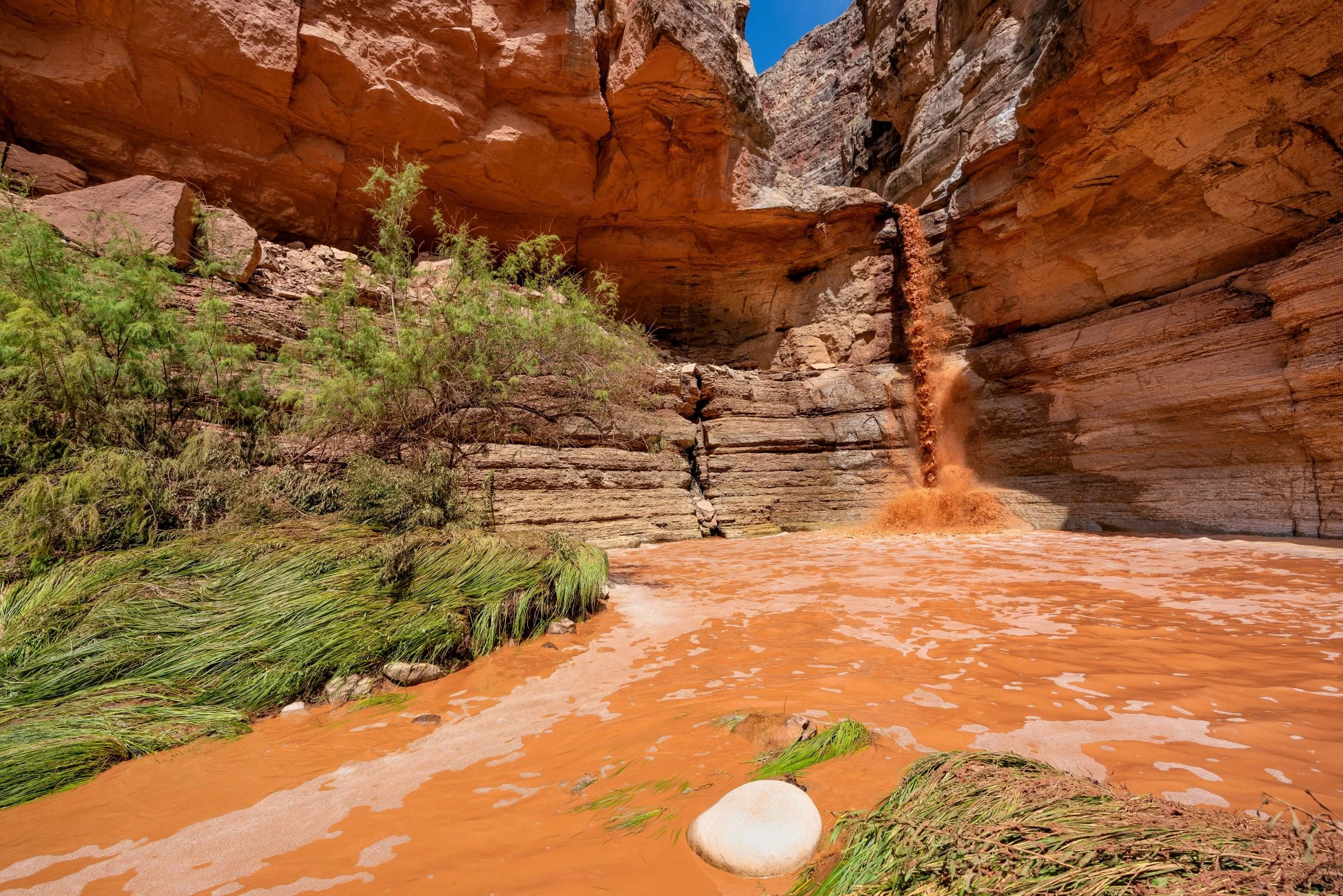New Satellite Alert System Makes the Grand Canyon Safer
Every year, thousands of hikers, backpackers, rafters, and paddlers head into the stunning backcountry of the Grand Canyon. But what many don’t realize is just how fast danger can strike, especially when it comes to flash floods. Cell phones often don’t work below the rim, and by the time you hear the roar of water, it might be too late.
Now, a new satellite-based warning system is offering an extra layer of safety. It's a game-changer, but not a replacement for smart planning.
What Is the Grand Canyon River Alert System?
The Grand Canyon River Alert System (GCRAS) is a first-of-its-kind emergency notification service that sends real-time hazard alerts to satellite devices like Garmin inReach, SPOT, and even satellite-enabled iPhones.
It was developed by a team of safety and science experts from:
The U.S. Geological Survey (USGS)
The National Weather Service (NWS)
Coconino County Emergency Management
The National Park Service (NPS)
Why does this matter? Because when you’re below the rim of the Grand Canyon, cell phone coverage disappears, but danger doesn’t.
How the System Works
The GCRAS uses satellite messaging to deliver critical safety alerts in real-time, including:
Flash flood warnings
Debris flow alerts
River hazards
Wildfire updates
Search-and-rescue notices
The alerts go out within 2 to 10 minutes of a known threat. That kind of speed can mean the difference between calmly getting to high ground or being caught in a deadly flood.
To sign up:
Bring a compatible satellite device.
Text GCRIVERALERTS to 928-707-7842 from your device.
Wait for a confirmation message before assuming you're signed up.
You can opt out at any time by texting STOP or LEAVE GCRIVERALERTS.
Source: The National Parks Service
Why It Matters: Recent Incidents
In early June 2025, thunderstorms dumped up to three inches of rain in the Havasu Creek basin. Numerous hikers became stranded by rising floodwaters. Rangers urged everyone to move to high ground…thankfully, all were rescued safe.
2. Havasu Creek Flash Flood – August 2024
Heavy monsoon rains turned Havasu Creek into a raging torrent. More than 100 people were stranded and one hiker, Chenoa Nickerson, 33, was tragically swept away near the creek's confluence with the Colorado River. Her body was later recovered over 20 miles downstream.
3. Flash Flood in a Slot Canyon – July 2021
Though slightly older, it's still relevant: in July 2021, a flash flood swept through a narrow slot canyon below the rim. A group from a rafting camp was caught off-guard. One Michigan woman died, and five others were severely hurt.
What the Alert System Can and Can’t Do
What it can do:
Send critical alerts even where cell phones don’t work
Help you respond quickly to natural hazards
Improve your odds in life-threatening situations
What it can’t do:
Predict every single threat or location-specific event
Replace the need for pre-trip planning
Work without your satellite device turned on and nearby
As Grand Canyon Superintendent Ed Keable said, “This adds a critical layer of safety in remote areas. But no technology replaces personal preparation and situational awareness.”
Don’t Let Technology Replace Preparation
GCRAS is an amazing tool, but it’s not a shortcut. At Trek for Trevor, we know first-hand how better preparation could have saved a life. Smart adventuring still starts with:
Planning your route: Know where you’re going, where water flows, and what elevation gains you'll face.
Checking the weather: Use official forecasts, NOAA, or park updates the day you enter the backcountry.
Talking with park rangers: They’ll share trail conditions, recent flood risks, and other key updates.
Packing proper gear: Always bring maps, emergency food, first aid, and backup water.
Your gear and knowledge are your first line of defense. Technology should always come second.
Source: edition.cnn.com
A Call to Every Adventurer
Whether you’re kayaking the Colorado, hiking to Phantom Ranch, or setting up camp near Elves Chasm, we encourage every Grand Canyon visitor to do the following:
Bring a satellite communication device
Sign up for GCRAS before you start your trip
Build a plan—not just a packing list
Check and recheck the weather
Understand flash flood signs: rising water, changing color, rumbling sounds
Even with all this, be ready to make fast decisions. The canyon’s beauty can quickly turn brutal.
Final Thoughts: Stay Wild, Stay Safe
The Grand Canyon River Alert System is a groundbreaking tool for wilderness safety. It gives adventurers a faster way to receive life-saving information when it matters most.
But no alert system can replace good judgment, route planning, and respect for nature’s power.
At Trek for Trevor, we believe every life matters. Every death from preventable mistakes is one too many. We’re proud that there’s a commitment to and development of new tools like GCRAS, but we’ll never stop reminding you: Preparedness and smart decision-making is the best gear you’ll ever carry.
Before your next trip, take a few extra minutes. Read the weather. Talk to rangers. Double-check your plan.
And then? Get out there and explore—safely.




